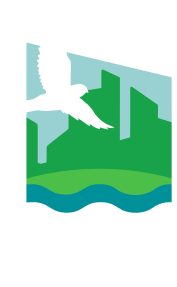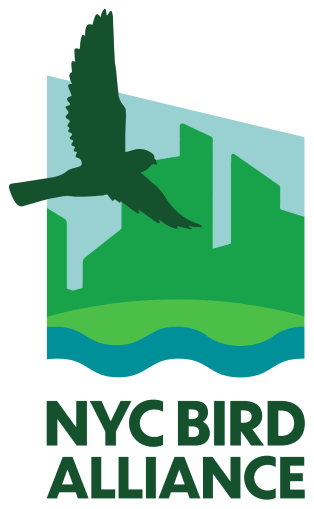Make NYC Bird Friendly
In the past 30 years, Red-tailed Hawks have become a regular sight in New York City, but face threats from use of rodenticides. Photo: Laura Goggin
Each year, millions of wild birds migrate through or make their homes in our city, providing ecological services by pollinating our flowers and giving us humans joy with their presence and song. But they face many threats to survival in our city, from collisions with our buildings’ windows to predation from cats and scarce, low quality habitat. NYC Bird Alliance works to protect birds and their habitats in New York City with coordinated and collaborative community science programs, advocacy campaigns, and habitat restoration events and cleanups, but there are also many actions you can take on your own to make your community and residence a safer place for birds.
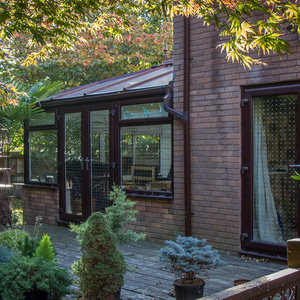
Applying Feather Friendly® adhesive dot patterns is one of many ways to make your windows bird-friendly. Photo: Bird Friendly®
Make Your Windows Bird Friendly
Nearly one billion birds are injured or killed by collisions with glass in the U.S every year. Collisions often occur where vegetation is reflected in windows, where vegetation is behind glass, or at glass walkways and building corners where birds can see through glass to habitat on the other side. To prevent collisions, glass must visible to birds using markings on glass or barriers in front of glass. Learn how to make your windows safe for birds.
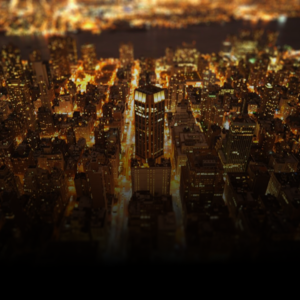
Turn Your #LightsOut
Though most collisions occur during the day, the amount of light emitted by a building is a strong predictor of the number of collisions it will cause. Learn why turning your lights out can have a big impact on reducing collisions throughout New York City.
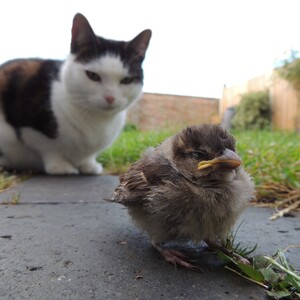
Each year, domestic cats kill approximately 2.4 billion birds in the U.S. Photo: Ivan Radic/CC BY 2.0
Keep Cats Indoors
Domestic cats make wonderful pets, but when allowed to roam outside, they are the greatest human-caused source of mortality to birds. Cats now function as introduced predators in many different habitats across the world, killing birds, reptiles, and other wildlife. Because most cats receive food from people, they also exist in much higher concentrations than wild felines do. But despite being fed, they kill wild birds and other animals by instinct.
Red-tailed Hawk on fence with brown rat. Photo: Laura Goggin
Use Alternatives to Rodenticides
The methods we use to control rodents can have a devastating impact on our birds of prey. Rat poisons (anticoagulant rodenticides) were detected in 84 percent of dead birds of prey found in New York City, in research conducted by the Wildlife Unit of the New York State Department of Environmental Conservation. Learn how to get control rodent populations without rodenticide.
This Common Tern adds emphasis to the sign below prohibiting beachgoers from entering tern, plover, and oystercatcher nesting grounds at Nickerson Beach, Long Island. Photo: Debra Kriensky
Share The Shore
The Share the Shore campaign seeks to help people learn more about beach-nesting birds that are extremely sensitive to human disturbance and become engaged as their protectors. Beachgoers often unintentionally disturb beach-nesting birds such as Piping Plovers, Common Terns, and American Oystercatchers because they are simply unaware that these birds nest on the wide, open, and bare expanses of sand.
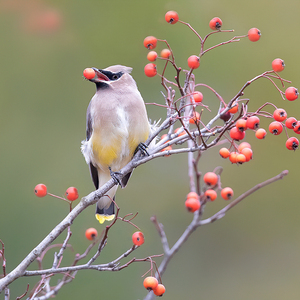
Cedar Waxwings and many other bird species are sustained by the berries of the Winterberry Holly during the colder months. Photo: David Speiser
Plant Native Plants
Birds, like people, have a few basic needs that must be met in order for them to survive, and thrive: food, shelter, safe places to raise young, and safe passage during migration. In New York City, we can help provide all these things by enriching the landscape for birds. In our highly managed greenspaces, which plant species we choose to include can have a strong impact on the health and diversity of our land bird population, and on our ecosystem in general.
